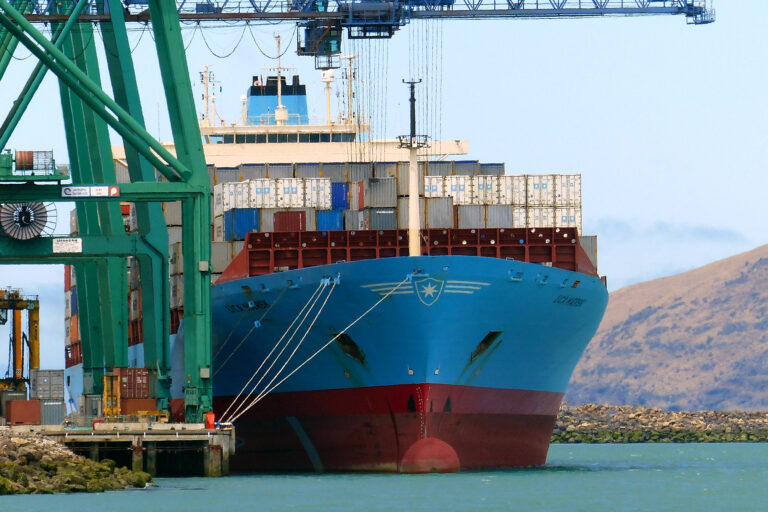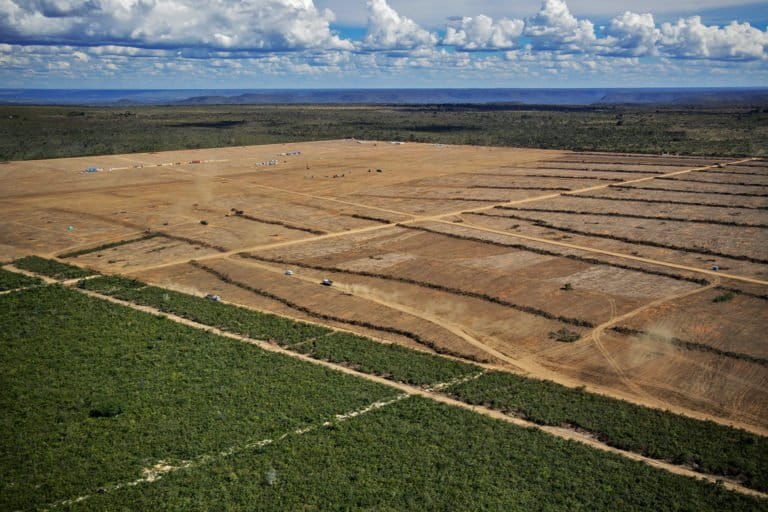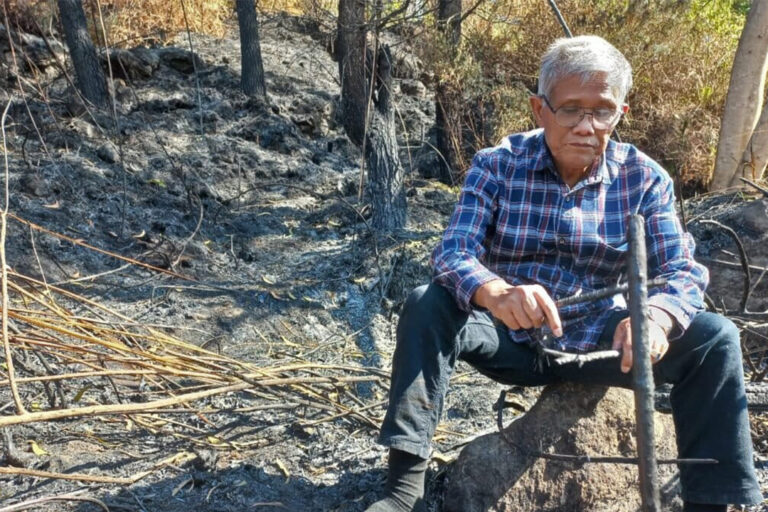Carbon dioxide could be frozen and stored to fight global warming
Carbon dioxide could be frozen and stored to fight global warming
mongabay.com
February 7, 2007
Carbon dioxide could be frozen and stored huge underground reservoirs as a way to fight global warming according to scientists from the University of Leicester and the British Geological Society (BGS).
Writing in the journal Planet Earth, the researchers argue that CO2 can be harmlessly contained in cool geological aquifers for many thousands of years. The technique would be an alternative to the existing method of geological sequestration in warm, deep sediments in the North Sea.
The gas would be stored in a solid form known as a gas hydrate. Currently there are extensive natural deposits of methane hydrates deep in the world’s oceans and below frozen tundra in the Arctic.

Photo by R. Butler |
“Investigations of natural methane hydrates will help our understanding of their role as a natural hazard, while carbon dioxide hydrates are a potential sink for greenhouse gas emissions,” said Professor Mike Lovell of the University of Leicester Department of Geology. “This work also has application in other fields such as space research into hydrates on other planetary bodies.”
Ameena Camps, a PhD research student at the University of Leicester, and Chris Rochelle from BGS were also involved in the work.
Related articles
Gas hydrates in ocean could trigger catastrophic climate change. Global warming will cause gasses trapped beneath the ocean floor to release into the atmosphere according to research presented at the Annual Conference of the Royal Geographical Society. The impact could initiate a catastrophic global greenhouse effect.
New potential fuel source carries global warming risk. Scientists supported by the Integrated Ocean Drilling Program, an international marine research program that explores sea floor sediments and rocks, announced that they found deposits of methane gas hydrates at considerably less depth than expected. The discovery, published in the August. 15, 2006 edition of the American Geophysical Union’s EOS may have implications for future energy use as well as climate change.
Background notes from a University of Leicester news release appears below.
University of Leicester: Cold storage solution for global warming?
Why should CO2 be captured and stored?
Approximately one third of all CO2 emissions due to human activity come from fossil fuels used for generating electricity, with each power plant capable of emitting several million tonnes of CO2 annually. A variety of other industrial processes also emit large amounts of CO2 from each plant, for example oil refineries, cement works, and iron and steel production. These emissions could be reduced substantially, without major changes to the basic process, by capturing and storing the CO2. Other sources of emissions, such as transport and domestic buildings, cannot be tackled in the same way because of the large number of small sources of CO2.
CO2 capture
Capturing CO2 can be applied to large point sources, such as large fossil fuel or biomass energy facilities, major CO2 emitting industries, natural gas production, synthetic fuel plants and fossil fuel-based hydrogen production plants. Broadly, three different types of technologies exist: Post-combustion, pre-combustion, and oxyfuel combustion.
In post-combustion, the CO2 is removed after combustion of the fossil fuel – this is the scheme that would be applied to conventional power plants. Here, carbon dioxide is captured from flue gases at power stations (in the case of coal, this is sometimes known as “clean coal”). The technology is well understood and is currently used in niche markets.
The technology for pre-combustion is widely applied in fertilizer, chemical, gaseous fuel (H2, CH4), and power production. In these cases, the fossil fuel is gasified and the resulting CO2 can be captured from a relatively pure exhaust stream.
An alternate method, which is under development, is chemical looping combustion. Chemical looping uses a metal oxide as a solid oxygen carrier. Metal oxide particles react with a solid, liquid or gaseous fuel in a fluidized bed combustor, producing solid metal particles and a mixture of carbon dioxide and water vapour. The water vapor is condensed, leaving pure carbon dioxide which can be sequestered. The solid metal particles are circulated to another fluidized bed where they react with air, producing heat and regenerating metal oxide particles that are recirculated to the fluidized bed combustor.
CO2 transport
After capture, the CO2 must be transported to suitable storage sites. This is done by pipeline, which is generally the cheapest form of transport, by ship or by land transport when no pipelines are available. Both methods are currently used for transporting CO2 for other applications.
Having captured the CO2 it would need to be stored securely for hundreds or even thousands of years, in order to avoid it reaching the atmosphere. Major reservoirs, suitable for storage, have been identified under the earth’s surface and in the oceans. Work to develop many of these options is in progress.
Underground storage of CO2 has taken place for many years as a consequence of injecting CO2 into oil fields to enhance recovery. CO2 is being deliberately stored in a salt water reservoir under the North Sea for climate change reasons. Sleipner is located in the North Sea where Norway’s Statoil strips carbon dioxide from natural gas with amine solvents and disposes of this carbon dioxide in a saline formation. The carbon dioxide is a waste product of the field’s natural gas production and the gas contains more (9% CO2) than is allowed into the natural gas distribution network. Storing it underground avoids this problem and saves Statoil hundreds of millions of euro in avoided carbon taxes. Sleipner stores about one million tonnes CO2 a year. The Weyburn project started in 2000 and is located in an oil reservoir discovered in 1954 in Weyburn, Southeastern Saskatchewan, Canada. The CO2 for this project is captured at the Great Plains Coal Gasification plant in Beulah, North Dakota which has produced methane from coal for more than 30 years. At Weyburn, the CO2 will also be used for enhanced oil recovery with an injection rate of about 1.5 million tonnes per year. The third site is In Salah, which like Sleipner is a natural gas reservoir located in In Salah, Algeria. The CO2 will be separated from the natural gas and re-injected into the subsurface at a rate of about 1.2 million tonnes per year.The potential capacity for underground storage is large but not well documented. Other geological storage schemes are under development and plans to monitor them are well advanced.
CO2 storage as a liquid and hydrate is a more novel method of geologically sequestering CO2 extracted from flue gases. CO2 would be injected into depleted/exhausted reservoirs and/or aquifers using similar infrastructure used in the North Sea Sleipner gas field, but injection would take place into sub-seabed sediments below deep waters at colder temperatures, where carbon dioxide is in its liquid phase. By injecting below the hydrate stability zone in cold deep sediments, if any upward migration occurred the stored liquid would enter the hydrate stability zone, forming CO2 hydrate, and trapping the underlying liquid. Storage as a liquid and hydrate would allow greater volumes of gas to be trapped within these deep water reservoirs (when compared with supercritical storage such as at Sleipner), and could remain trapped for thousands of years.
This article is based on a news release from the University of Leicester














